Crispy, crunchy and juicy, this deep fried frog legs recipe was a favorite when I was chef at a French restaurant. It's a classic appetizer perfect for a French or Creole menu.
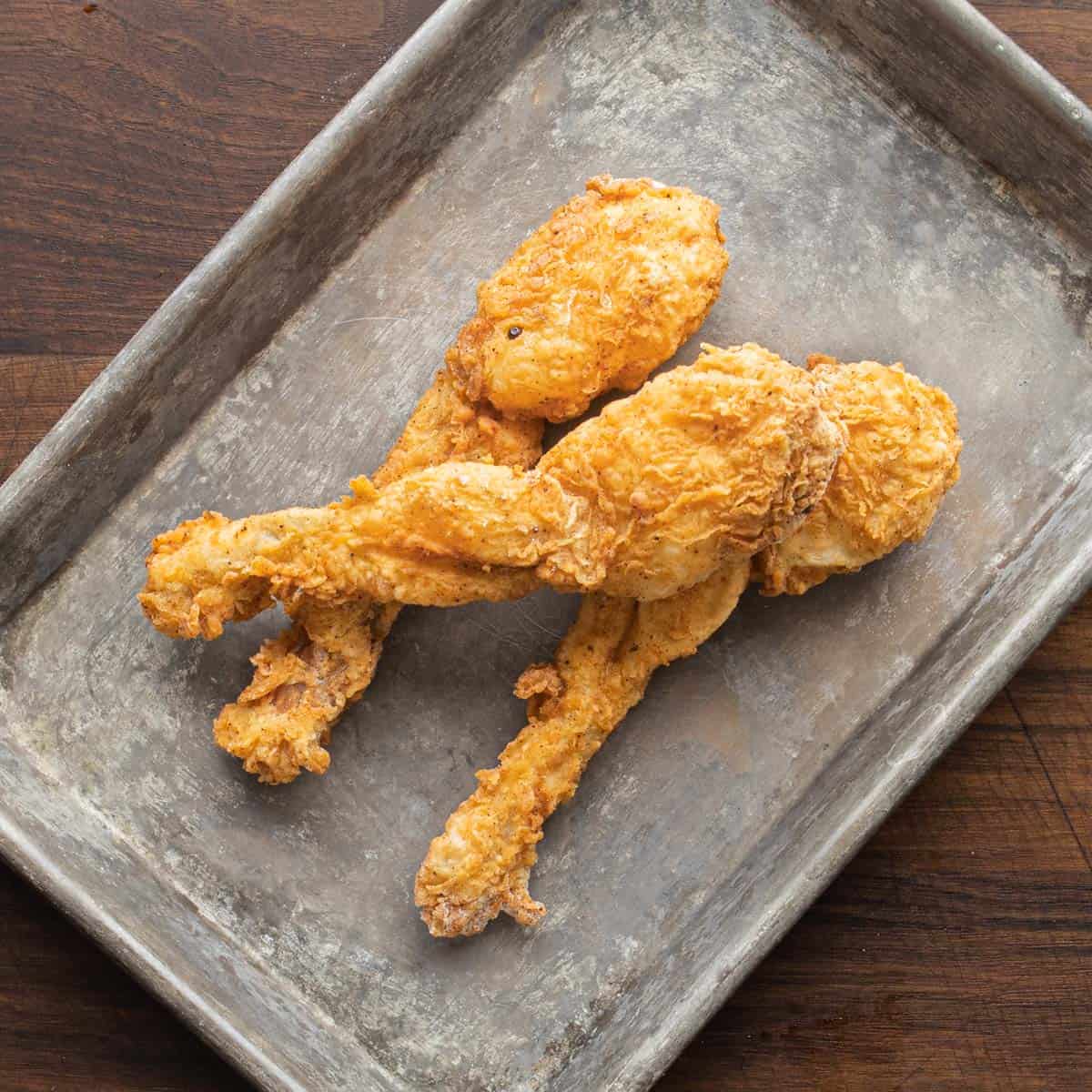
What do Frog Legs Taste Like?
Frog legs taste like chicken, but they have their own special, flavor. They're very juicy and tender. If you like chicken, you'll like frog legs.
What to Serve with Frog Legs
For a French meal, serve frog legs with a fresh green salad, dry sauvignon blanc, and a soft cheese and bread. At the restaurant I served mine as an appetizer with lemon wedges and garlic aioli.
Southern fried frog legs might be served with coleslaw, hushpuppies and braised greens.
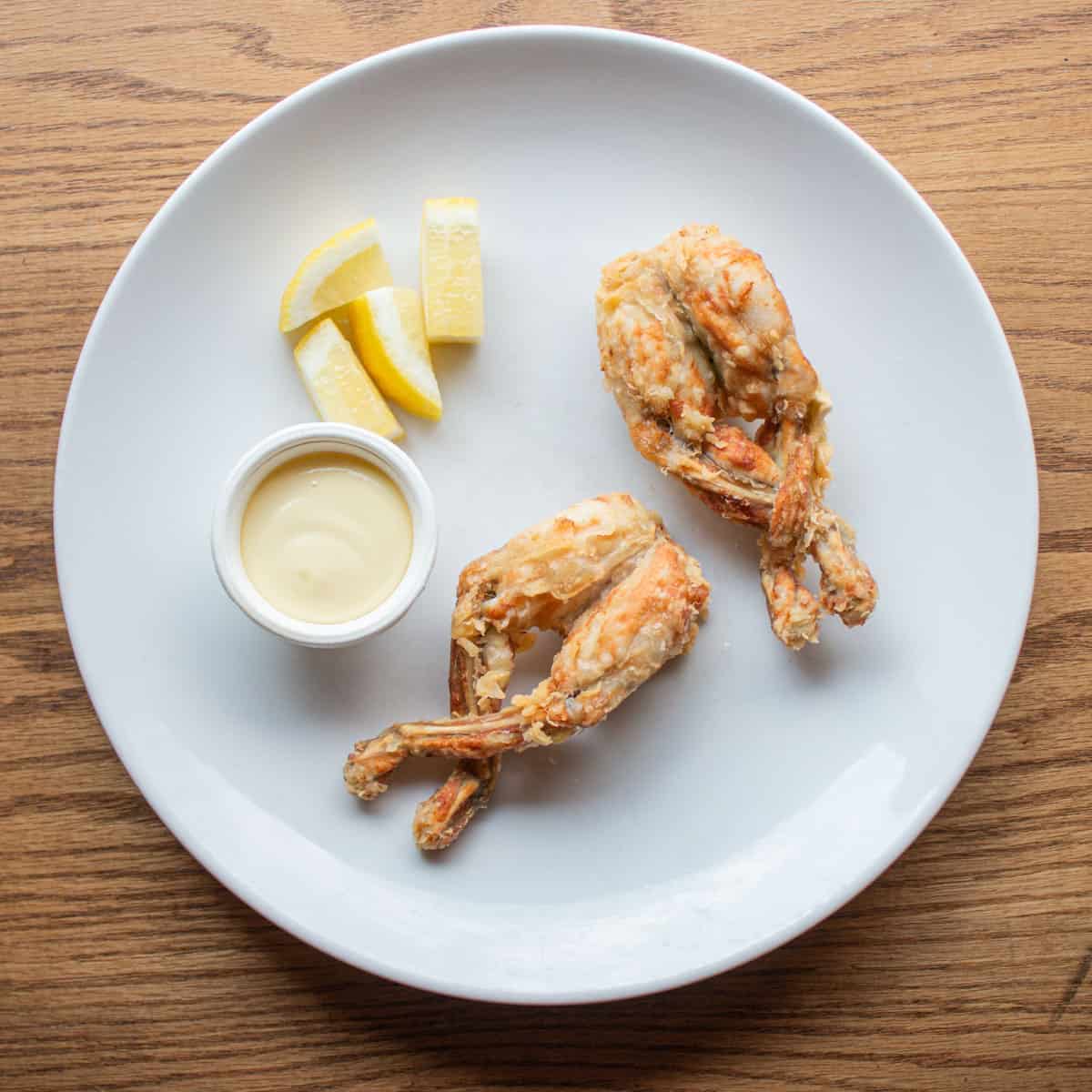
Where to Buy Frog Legs
Most frog legs are sold frozen. I like to buy mine from a local seafood shop, but Most frog legs are sold frozen. I buy mine from a local seafood shop, but you can special order them at many grocery store seafood counters.
I find frozen frog legs at my local Asian grocer as well, they may be whole, so you can discard the rest of the frog or make soup. Frog legs are popular in Asia, so you might also try recipes for Vietnamese frog legs.
How to Make it
The best way to cook frog legs is with flour-egg-flour breading. When you're ready to make fried frog legs, toss the legs in flour, egg, and then flour again. Deep fry at 375 F. You can also shallow fry them.

Cooking Frog Legs
You can fry single legs, or pairs of legs. If you fry pairs, cut the calf on one leg with a knife and stick the other leg through. This will keep the legs together as they fry.
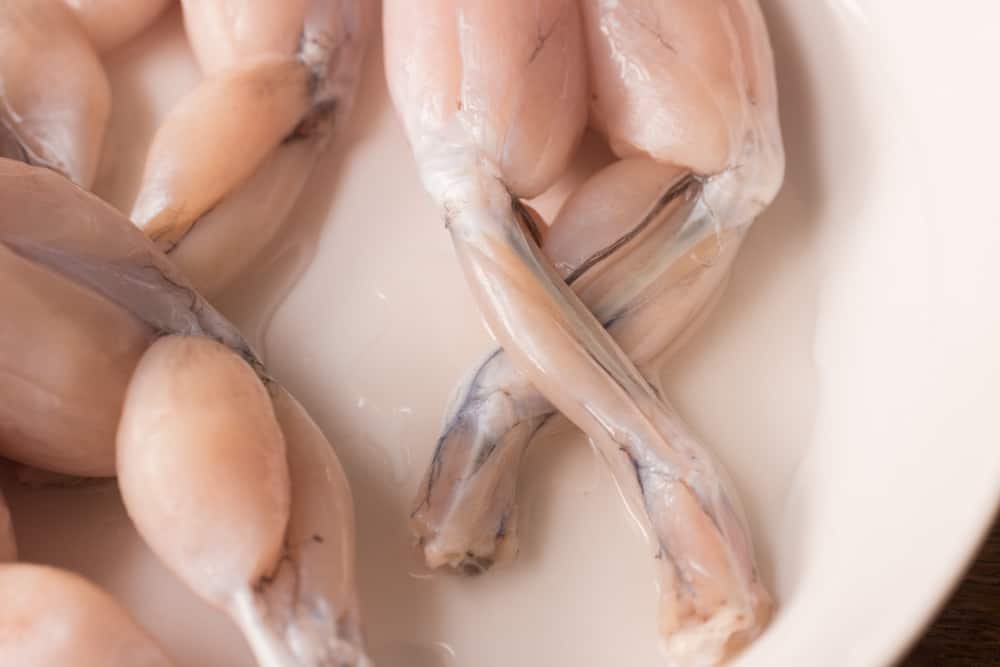
Marinated Frog Legs (French)
A French Chef taught me to marinate frog legs (grenouille in French) before frying. This is optional, but adds great flavor to the juicy white meat.
To make the French marinated frog legs recipe, puree the following in a blender.
- 1 clove of garlic
- 1 oz of basil
- 1 oz parsley
- 8 ounces of oil in a blender
Wrap the legs in cheesecloth in a dish, then pour the oil over, cover and rest overnight before frying.

More French Food
Morilles a la Creme (Morels with Cream)
Rabbit Chasseur with Wild Mushrooms
Classic Fried Frog Legs
Equipment
- 2 Mixing bowls
- 1 deep fryer or dutch oven
Ingredients
- 6 pairs of frog legs thawed
- 4 cups peanut oil grapeseed, or rice bran oil
- kosher salt to taste
- 3 large eggs Beaten with a splash of milk
Seasoned Flour
- 2 cups all purpose flour
- 1 tablespoon garlic powder
- 1 tablespoon sweet paprika
- 1 teaspoon dried thyme
- 1 teaspoon cayenne pepper
- 1 teaspoon Kosher salt
Instructions
- Cut the frog legs in half.
- Heat a deep fryer or cast iron skillet on medium high heat to 375 degrees. Season the frog legs with salt and pepper dip in flour, then beaten egg, then in the flour mixture again.
- Tap off excess flour then carefully dip the frog legs into the hot oil. Make sure not to overcrowd the pan which can lower the heat.
- When the frog legs are golden brown about 3-4 minutes, remove them to a warmed plate lined with a paper towel. Keep them a warm 325 F oven until all the legs are fried.
- Sprinkle with a pinch of salt and garnish with lemon slices, lemony mayonnaise or aioli, or hot sauce.


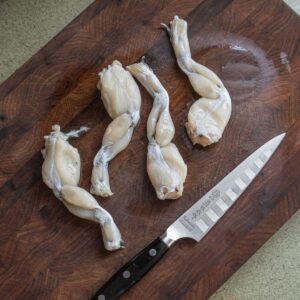
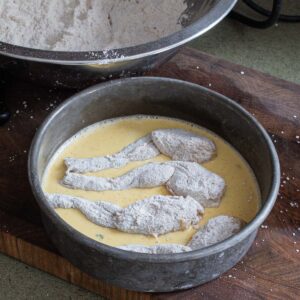

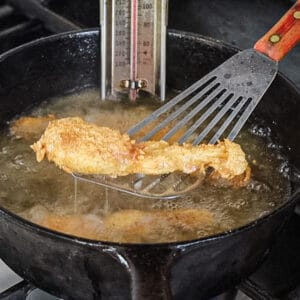
Paul Brown
I love frog legs. Great idea for using ramp leaves too.
Nicole Bloch
"not nearly as cool as fried kermit legs" love it...can't stop giggling. Thanks for, as always, a delightful and informative post <3
Alan Bergo
It's not easy being green. 🙂